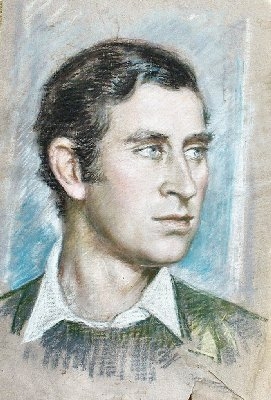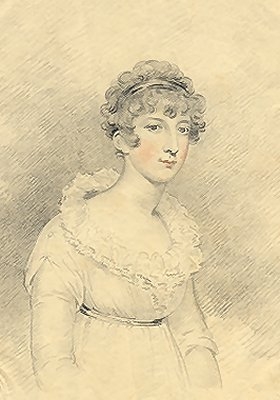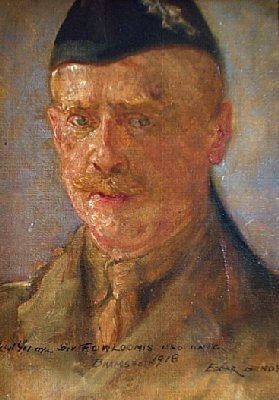featured item

outstanding quality antique victorian cranberry glass oil... Read more
portrait of louise ad?la?de de bourbon, 1696-1750
- View other items in:
- antiques interior design modern and vintage
- other interior design
artware ltd
Enquire about this antique
Artware Ltd has 565 antiques for sale.
click here to see them all
Louise Ad?la?de de Bourbon was the daughter of Marie Th?r?se de Bourbon and Fran?ois Louis de Bourbon, Prince of Conti; she was known as "Mademoiselle de La Roche-sur-Yon" . Louise Ad?la?de de Bourbon (2 November 1696 ? 20 November 1750) was a French princess of the Blood. She had no children and thus no descendants. She was born at the H?tel de Conti in Paris Louise Ad?la?de was the youngest surviving daughter of Fran?ois Louis, Prince of Conti and his wife Marie Th?r?se de Bourbon. From birth, Louise Ad?la?de was known by her style of Mademoiselle de La Roche-sur-Yon. Her oldest sister was Marie Anne de Bourbon (1689?1720), future Princess of Cond?; her oldest surviving brother was Louis Armand de Bourbon, the future Prince of Conti. The year after her birth, her father was made the Titular King of Poland by Louis XIV but later declined the offer due to his affections for the Duchess of Bourbon, his mistress and daughter of the king. In 1709, Mademoiselle de La Roche-sur-Yon lost her father and her brother succeeded as Prince of Conti. Her older sister married in 1713 at the age of 24; the groom was her maternal cousin Louis Henri, Duke of Bourbon. At the death of her sister the Princess of Cond? in 1720, Louise Ad?la?de was given all property owned by the Princess - much to the annoyance of the Prince of Cond?, Duke of Bourbon. In 1732 her mother died having reconciled with her children - the Conti family had been estranged from their mother due to their fathers behaviour. Having outlived all her siblings and parents, Mademoiselle de La Roche-sur-Yon died in Paris at the age of 54. She was buried at the Carmel du faubourg Saint-Jacques, in the capital.
Fran?ois de Troy was a French painter and engraver who became principal painter to King James II in exile at Saint-Germain-en-Laye and Director of the Acad?mie Royale de peinture et de sculpture. One of a family of artists, Troy was born in Toulouse, the son of Nicolas de Troy (1608 - 15 September 1684), a painter in that city, and was the brother of Jean de Troy (4 April 1638 - 25 June 1691). Troy was taught the basic skills of painting by his father, and perhaps also by the more worldly Antoine Durand. Fran?ois de Troy is not to be confused with his son, the portrait painter Jean-Fran?ois de Troy (1679-1752), who studied under him. At some time after 1662, Troy went to Paris to study portrait painting under Claude Lefebvre (1633-1675) and Nicolas-Pierre Loir (1624?1679]. A. P. F. Robert-Dumesnil states that this occurred when Troy was aged twenty-four. In 1669, Troy married his master Nicolas-Pierre Loir''s sister-in-law, Jeanne Cotelle. In 1671, he was approved (agr??) by the Acad?mie Royale de peinture et de sculpture. In 1674, he was received into the Academy as a history painter, with a reception piece (morceau de r?ception) entitled Mercure coupant la t?te d''Argus (''Mercury cutting off the head of Argus''). Troy''s early known works include tapestry designs for Madame de Montespan, one of the many mistresses of Louis XIV of France, and paintings with religious and mythological subjects.
In the 1670s, he became friendly with Roger de Piles, who introduced him to Dutch and Flemish painting, and after the death of Claude Lefebvre in 1675, Troy changed his direction to become a portrait artist, aiming at commissions from Lefebvre''s former clients. In 1679 he was commissioned to paint a portrait of the Swedish ambassador Nils Bielke, and in 1680 that of Maria Anna of Bavaria (1660-1690), shortly after her marriage to Louis, Dauphin of France (1661-1711), the heir to the French throne, on 7 March 1680.Troy became a successful painter of fashionable single and group portraits.His clients included Madame de Montespan, her son by the king, Louis-Auguste de Bourbon, Duke of Maine, and his wife Anne-Louise-B?n?dicte de Bourbon-Cond?. As a result of such commissions, Troy was able to work continuously in court circles for almost fifty years. He was admired for his ability to capture the upper classes and their preoccupation with manners and fashion. Perhaps more importantly, he was said to have the ability to make any woman look beautiful, which made him sought after by all women. In the 1690s, Troy became the principal painter to the court of King James II in exile at Saint-Germain-en-Laye, where he was the master of Alexis Simon Belle. By the years 1698 to 1701, a period of peace between France and Great Britain, Jacobites could cross the English Channel carrying portraits of James Francis Edward Stuart and his sister Princess Louisa Maria. Troy was then James II''s only court painter and needed the help of Belle, his best student, to produce the many portraits commissioned from him. In 1698, he was appointed a Professor of the Acad?mie Royale, and in 1708 became its Director. Troy was an engraver as well as a painter. Among his engravings is one of the funeral in 1683 of Maria Theresa of Spain, the wife of King Louis XIV. Apart from his son, Jean-Fran?ois, Troy''s other students included Andr? Bouys and John Closterman. He died in Paris at the age of eighty-five.
Antiques.co.uk Ref: MCBXCMF7
- Materials:
- Oil on Canvas
- Width (cm):
- 81.28 x 64.80 cm 32.00 x 25.51 ins
Artware Ltd
Artware Fine Art specialises in fine antique, decorative and historical portraits and topographical pictures . We cover a period from the 17th and 18th centuries through to the 19th & 20th Centuries. We have over 150 portraits in stock, which can be viewed on our web site, each historical portrait has well researched biographical information both on the sitter and the artist.
Contact details
18 La gare
51 Surrey row
London
Greater London
SE1 0BZ
UNITED KINGDOM
T: 0207 921 97904
E: greg@artwarefineart.com
W: www.artwarefineart.com











